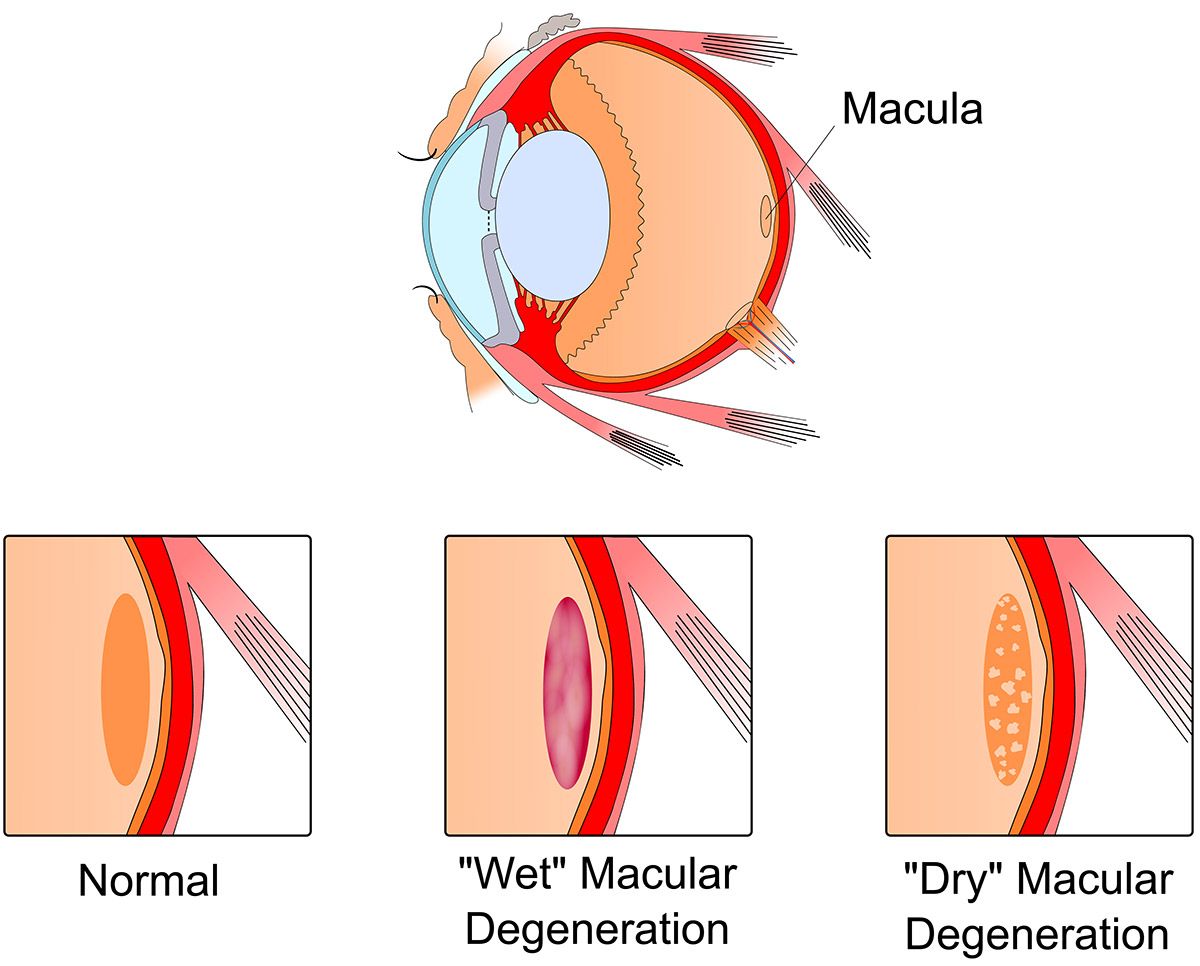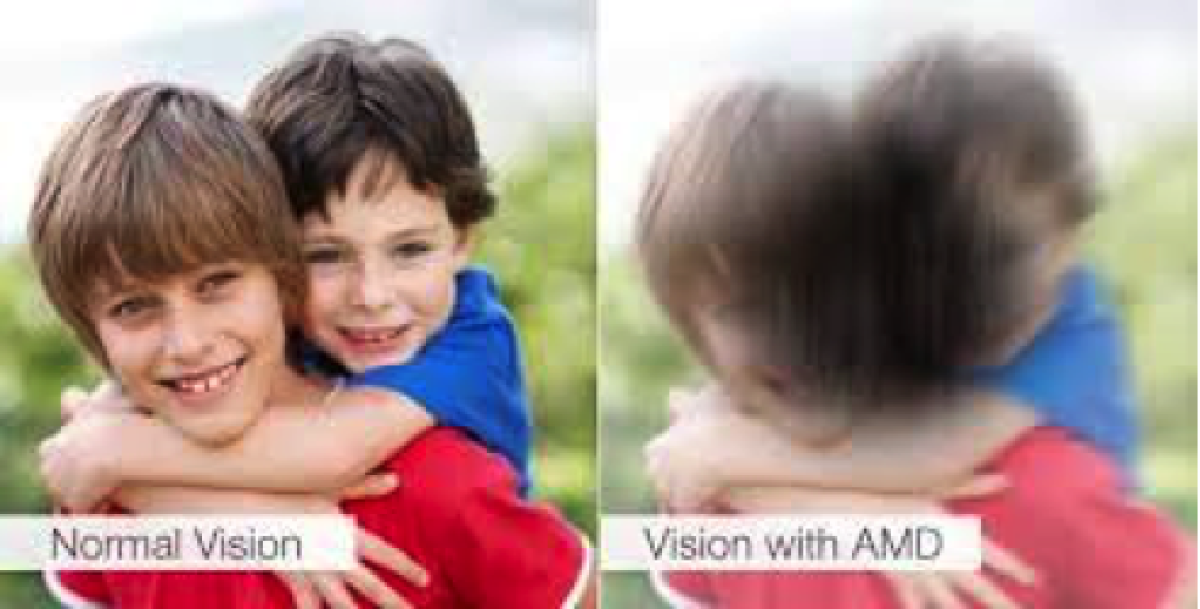More about AMD, a major global health problem
A disease that’s the biggest cause of sight loss for people aged over 50 in the developed world
Age Related Macular Degeneration (AMD) is a worldwide public health challenge. It is by far the most common cause of sight loss in the developed world.
In spite of many advances in genetics, pathogenesis and epidemiology we do not know how to prevent the disease from progressing from the benign early stages to the advanced end stages involving debilitating sight losses in all cases.

The two types of AMD: dry and wet
Dry AMD
This is the early stage of AMD. When it is detected early, usually from a retinal photograph patients are advised to improve their lifestyle (details below). There are currently new treatments being developed and these drive the need for early detection and accurate monitoring.
Symptoms
A mild but progressive loss of sight, distortion of straight lines, loss of night vision depending on severity.
Early AMD accounts for around 80% of the total number of patients.

Over half a million people in the UK alone suffer from AMD
The largest cause of blindness in the developed world
$343 billion
estimated annual cost of worldwide visual impairment due to AMD
Wet AMD
This is the advanced stage of the disease. Treatment of wet AMD is expensive and involves monthly visits to an eye clinic where patients are given an intra-ocular injection. Although these visits are rather uncomfortable for patients the therapy works in that vision is temporarily preserved. Ideally the disease should not be allowed to progress to this stage.
Symptoms
Patients with wet AMD are severely disabled (see figure 1). They become a major burden on health care systems. Symptoms include:
- Inability to drive
- Inability to organise everyday activities such as as cooking and taking medication
- Unable to read or recognise faces
- Falls/fear of falling
- Hallucinations
- Social isolation
- Frequent bouts of depression
